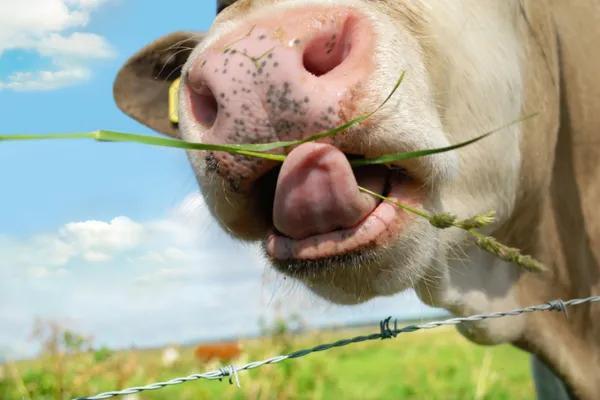
How much grass do livestock need?
Managing a lifestyle farm involves managing the pasture for multiple livestock species. Cattle, sheep, and goats each have unique grazing needs that you need to understand to ensure their health and productivity.
Here’s a guide to managing pasture length and feeding practices:
Cattle
Firstly, as with all livestock, ensure you have the right number of cattle for your available pasture. Rotate them sensibly, moving them onto paddocks with sufficient grass and shift them before the grass gets too short.
Pasture length guidelines for cattle
Adult, dry stock: Move them off the paddock when the grass gets down to 5 cm.
Growing, pregnant, or lactating stock: Move them when the grass is at a minimum of 8 cm.
Winter Feeding: In winter, supplement their diet with hay, balage, or hard feed to keep them healthy when grass growth is slow.
Sheep
For sheep, pasture length in general is simple:
1 cm leads to weight loss
2 cm maintains weight
3 cm slowly increases weight
4+ cm is ideal
Pasture length guidelines for breeding sheep
Premating: Provide 3+ cm pasture 3-6 weeks before mating to boost ovulation.
Postmating to Midpregnancy: Maintain 2+ cm to keep a healthy weight.
Late Pregnancy: Offer 3+ cm pasture to support lamb growth and use pellets ("sheep nuts") especially for ewes carrying multiples.
Prelambing to Lactation: Set stock ewes on 4+ cm grass 2-4 weeks before lambing, ensuring they have enough nutrition through lambing and early lactation.
Growing Lambs: Ensure young lambs graze on 3-4+ cm pasture to meet their energy needs and avoid parasites found in shorter grass.
Goats
Goats should never be on short pasture, and should ideally be on pasture 8cm+ in length. This means their feed is unlikely to contain parasite eggs (they’re in the bottom 3cm of pasture) and the grass will be higher in fibre than young grass.
In general: Aim for 9cm and move them off the paddock when the grass gets down to 5 cm.
Pasture length guidelines for breeding goats
PostMating to Midpregnancy: 5-8 cm pasture with ad lib hay to maintain a healthy weight.
Late Pregnancy to Prekidding (5 Weeks Out): Increase nutrition as 80% of the kid growth happens during this time. Does carrying multiples need significantly more food and should graze on lusher pasture. Provide high quality hay and gradually introduce supplementary pellets.
Prekidding to Lactation (2 Weeks Out): Gradually switch to a "milking goat" pellet to avoid sudden diet changes around kidding.
Lactation: Minimize weight loss by providing high energy grass, ad lib hay, and milking pellets.
Growing Kids: 5 cm+ pasture to meet their energy needs and avoid parasites.
Balancing grazing practices
Effective pasture management for cattle, sheep, and goats ensures healthy livestock and a more productive farm. By monitoring pasture lengths and adjusting feeding practices according to seasonal changes and breeding cycles, you can ensure the wellbeing of all your animals.
Remember, when dealing with ruminants, all changes to diet must be gradual to avoid problems with the rumen.
Need more information?
What You Need to Know to Keep Livestock: our online course for lifestyle farmers covering practical, legal and day-to-day animal care.

